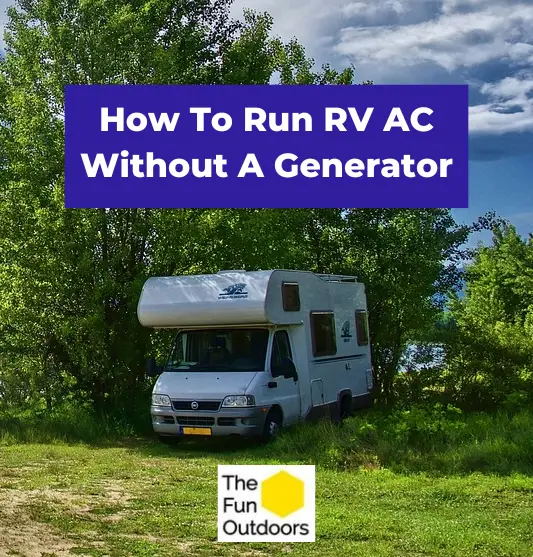As the popularity of RV living and traveling continues to increase, more and more people are looking for ways to make their journeys more comfortable and sustainable. One common challenge that RV owners face is how to run RV AC without a generator. Not only can generators be noisy and cumbersome, but they also contribute to air pollution and require a constant supply of fuel.
There are several alternative power sources to power your RV air conditioning without a generator, including solar panels, installing additional batteries, and tapping into shore power.
In this article, we will discuss various methods for running RV air conditioners without generators, weighing their pros and cons, and providing practical tips for utilizing these alternative power sources.
Alternative Methods for Running RV AC Without a Generator
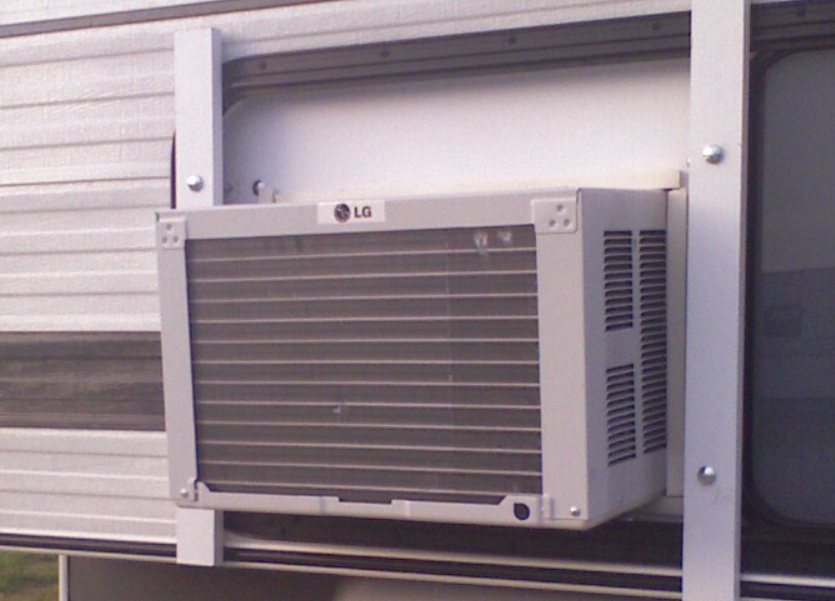
Shore Power Using an Inverter
One alternative method for running RV AC without a generator is to utilize shore power by connecting to an electrical pedestal at a campsite or RV park. To do this, you’ll need a power inverter that converts the electrical pedestal’s AC power into DC power compatible with your RV’s appliances, including the air conditioner.
A properly-sized shore power cord should be used to establish a safe connection between your RV and the pedestal. This method allows you to run your RV AC without fuel costs and provides the added benefit of being able to recharge your RV’s batteries as well.
See Related: Why Does My RV Battery Keep Dying?
Battery Power
Another option for running RV AC without a generator is to rely on battery power. This method requires you to have additional and powerful deep cycle batteries installed in your RV to meet the air conditioner’s power demands.
To effectively run your RV AC, it is important to choose quality batteries that have a high amp-hour rating. Keep in mind that this method requires careful monitoring of battery usage, as heavily relying on your batteries to power the AC can quickly deplete them. Always ensure you have a plan in place to recharge your batteries – whether through solar power, shore power, or even a portable power station.
See Related: Should I Disconnect My RV Battery On Shore Power?
Solar Power
For those more environmentally conscious, using solar panels as an alternative power source to run RV AC without a generator is a viable option. This method involves installing solar panels on the roof of your RV, which capture sunlight and convert it into electricity. You’ll also need a good quality solar charge controller and an inverter to make the solar-generated power usable for your RV’s appliances.
Solar power usage can significantly reduce your reliance on fossil fuels while boondocking in remote locations. However, keep in mind that this method’s effectiveness is directly affected by the sunlight availability and may require additional sources of power during periods of low sunlight, such as early morning, late afternoon, and rainy or overcast days.
Understanding RV AC Power Sources
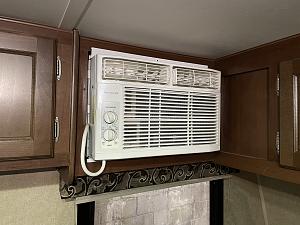
When it comes to powering your RV’s air conditioning unit without a generator, it is essential to understand the different power sources available. In this section, we will discuss three primary power sources: Generator Power, Solar Power, and Battery Power.
Generator Power
Generator power is a common source of electricity for running an RV’s air conditioning unit. However, generators can be noisy and require a fuel source, such as gasoline, diesel, or propane. Although popular, using a generator might not always be the most practical or eco-friendly solution for powering your RV’s AC system.
See Related: What Size Generator For My Camper?, Does A Generator Need To Be Grounded?, and How To Mount A Generator On A Camper
Solar Power
Solar power is an increasingly popular and sustainable option for RV owners looking to run their RV AC unit without a generator. By installing solar panels on the roof of your RV, you can harness the power of the sun to generate electricity. This energy can be stored in batteries and later used to power your RV’s AC, as well as other electrical appliances. To effectively run an RV AC using solar power, choosing the right inverter and ensuring adequate solar panel capacity is crucial.
- Solar Panels: They convert sunlight into electricity, which is stored in batteries. Ensure the solar panel system has enough capacity to generate enough power for your RV’s AC unit and other electrical appliances.
- Inverter: This device converts DC power from the batteries into AC power, which is required to run the air conditioner. Choose a high-quality inverter that is compatible with your RV AC unit and can handle the required power draw.
Battery Power
Battery power is another alternative method to run an RV AC without relying on a generator. RV deep cycle batteries, which are designed to provide a steady stream of power over an extended period, are particularly suitable for this purpose.
Here are some key points to consider:
- Additional Batteries: Ensure your RV has enough battery capacity to power the AC unit without depleting the energy needed for other devices.
- Power Inverter: As mentioned in the Solar Power section, you need a power inverter to convert DC power from the batteries to AC power for the air conditioner.
- Battery Charging: Since using batteries to power your RV AC will drain them quickly, it is essential to have a reliable charging system in place, such as solar panels or shore power hookups, to recharge the batteries when not in use.
Choosing the Right Batteries
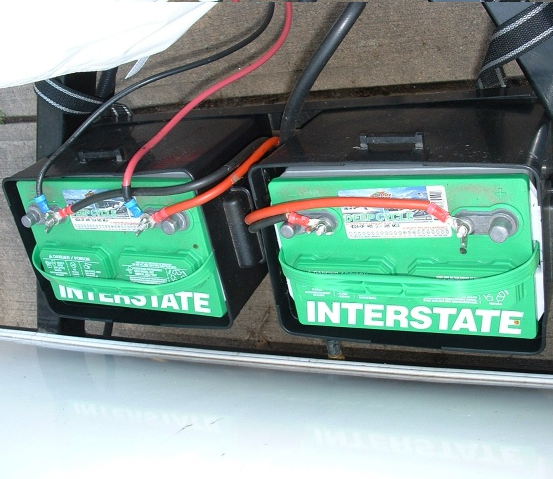
When it comes to running an RV air conditioner without a generator, the choice of batteries is crucial for maintaining efficiency and getting the most out of your AC unit. There are several types of batteries available, each with their pros and cons. In this section, we will focus on lead-acid batteries, lithium batteries, and deep-cycle batteries.
See Related: How to Charge RV Batteries
Lead-Acid Batteries
Lead-acid batteries are a popular choice for many RV users due to their affordability and widespread availability. They come in two main types: starting batteries and deep-cycle batteries (covered in a later subsection). Starting batteries provide a high burst of amps for a short duration but are not suitable for long-term power needs like running an AC unit.
Some key points about lead-acid batteries:
- Affordable and widely available
- Two types: starting and deep-cycle
- Not ideal for long-term power needs
Lithium Batteries
Lithium batteries are becoming increasingly popular in the RV community for their many advantages over lead-acid counterparts. They are lightweight, have a longer lifespan, and can withstand more charge cycles. Additionally, lithium batteries discharge efficiently, making them a good choice for running an air conditioner.
Here are a few highlights of lithium batteries:
- Lightweight and long-lasting
- More charge cycles
- Efficient discharge for RV air conditioners
Deep-Cycle Batteries
Deep-cycle batteries are specifically designed for sustained power output over an extended period. They are ideal for running an RV air conditioner without a generator, as their capacity allows for longer durations of use. Both lead-acid and lithium batteries can be deep-cycle, but their characteristics may differ.
Key aspects of deep-cycle batteries include:
- Built for sustained power output
- Ideal for running an RV AC unit without a generator
- Can be lead-acid or lithium
Improving RV AC Efficiency
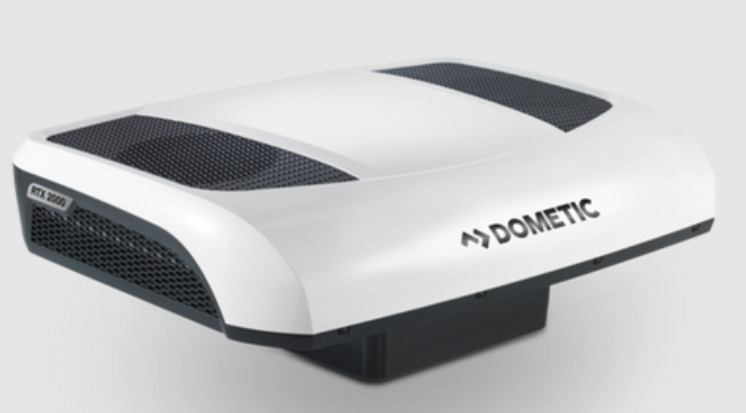
Soft Start Kits
One way to enhance the efficiency of your RV air conditioning unit is by installing a soft start kit. These kits allow the AC unit to start with a lower power surge, easing the startup stress on the system and reducing energy consumption. In turn, this can help to extend the life of the unit and decrease the overall power needed to keep the AC running, making it possible to operate without a generator.
Proper Maintenance
Proper maintenance also plays a crucial role in improving the efficiency of your RV air conditioning system. It is essential to clean or replace air filters regularly, as clogged filters can lead to reduced airflow and increased energy consumption. Furthermore, keeping the internal components of the AC unit clean and well-lubricated will ensure that it runs smoothly and efficiently over time.
Some essential maintenance tasks include:
- Cleaning or replacing air filters monthly or as needed
- Inspecting and cleaning the evaporator coil and condenser coil
- Monitoring refrigerant levels and refilling when necessary
- Checking for leaks in the system and sealing any found
- Lubricating internal components as needed
Sizing Your AC Unit Appropriately
When it comes to selecting an air conditioning unit for your RV, the size and power of the AC play a crucial role in determining its efficiency. An AC unit that is too small may struggle to cool the entire RV, while one that is too large may result in short cycling and increased energy usage.
To appropriately size an AC unit for your RV, consider the following factors:
- The size of your RV (square footage)
- The desired indoor temperature
- The amount of insulation in the RV
- The number of windows and their orientation
By considering these factors and selecting an air conditioning unit that is appropriately sized for your RV, you can improve its efficiency and potentially use it without a generator.
Supplementary Equipment and Strategies
In this section, we will discuss additional equipment and strategies for RV owners who want to run their RV air conditioning without using a noisy generator. Both seasoned and novice RV enthusiasts can benefit from these alternative options.
Additional Batteries and Power Banks
One popular solution among RV owners is increasing the capacity of their RV’s electrical system by adding extra deep cycle batteries or battery banks. This allows the RV air conditioning unit to draw more power from the batteries, without overloading the system. When considering additional batteries, it’s essential to calculate the required amperage, voltage, and runtime of the AC unit.
With extra batteries, RV owners often rely on inverters to change the DC power from the batteries to AC for the air conditioning unit. You can find different types of inverters available, from modified sine wave to pure sine wave inverters, each with their benefits and drawbacks. Experts recommend choosing an inverter with sufficient output capacity to match the air conditioner’s energy needs.
It’s also essential to recharge the batteries during the journey, depending on the RV owner’s energy usage and length of the trip. Recharging can be achieved through solar panels, provided there’s enough sunlight, or by plugging into external sources like campground electrical hookups.
Portable Power Stations
Portable power stations have become increasingly popular among RV enthusiasts, offering an efficient alternative to traditional generators. These compact devices are essentially large, portable batteries that can power various electrical appliances, including RV air conditioning units.
Portable power stations offer multiple benefits for RV owners, such as easy portability and quieter operation compared to generators. Additionally, they typically include multiple output types (AC, DC, and USB), making them versatile for different electrical devices like camping accessories, TVs, and computers.
When selecting a portable power station, consider factors like the overall capacity (measured in watt-hours), the output power (measured in watts), and the compatibility with your RV’s electrical system and air conditioning unit. Keep in mind that power stations may require recharging during a journey, either through solar panels, an external power source at a campground, or a vehicle’s alternator while driving.
Frequently Asked Questions
The duration of running an RV air conditioner on battery power depends on the capacity of the batteries and the power consumption of your RV’s AC unit. Typically, a fully charged deep-cycle battery can power an AC unit for a few hours. To extend the runtime, consider upgrading to high-capacity batteries or using multiple batteries in parallel.
The best way to run RV AC while boondocking is by using a combination of renewable energy sources, such as solar panels, and high-capacity batteries. Solar panels can charge the batteries during the day, which can then be used to power the RV air conditioner in the evening or on cloudy days. Investing in a high-quality power inverter will also help ensure efficient energy conversion for running the AC unit.
Whether or not a generator is necessary for your RV depends on your specific energy needs and preferences. Generators provide an easy and reliable source of power for running appliances like air conditioners, but they also produce noise and require consistent fuel supply. If you prefer a quieter and more environmentally friendly solution, consider using a combination of solar panels and high-capacity batteries to generate electricity for your RV.
Yes, there are solar-powered solutions for running RV air conditioners. Installing solar panels on your RV’s roof is a great option to generate green electricity to power the AC unit. It’s essential to ensure that the solar panel system is correctly sized to generate sufficient power for your air conditioner and other appliances. Combining solar energy with high-capacity batteries and a power inverter enables you to run your RV’s AC without a generator, reducing your reliance on fossil fuels and creating a more sustainable energy solution.

